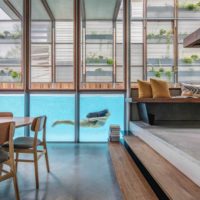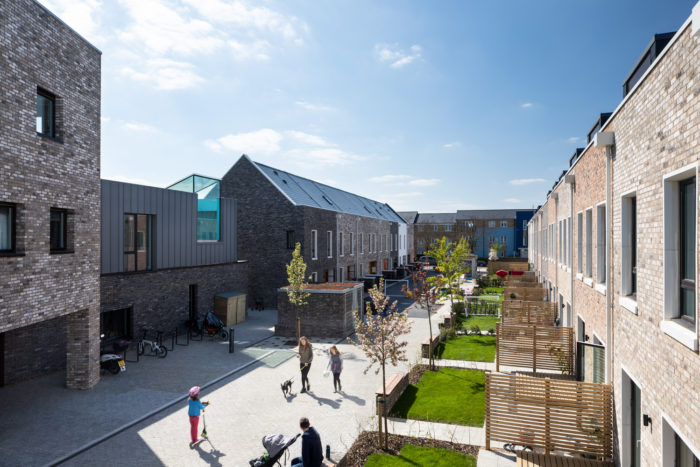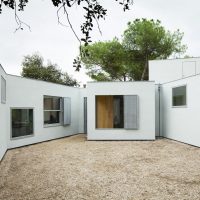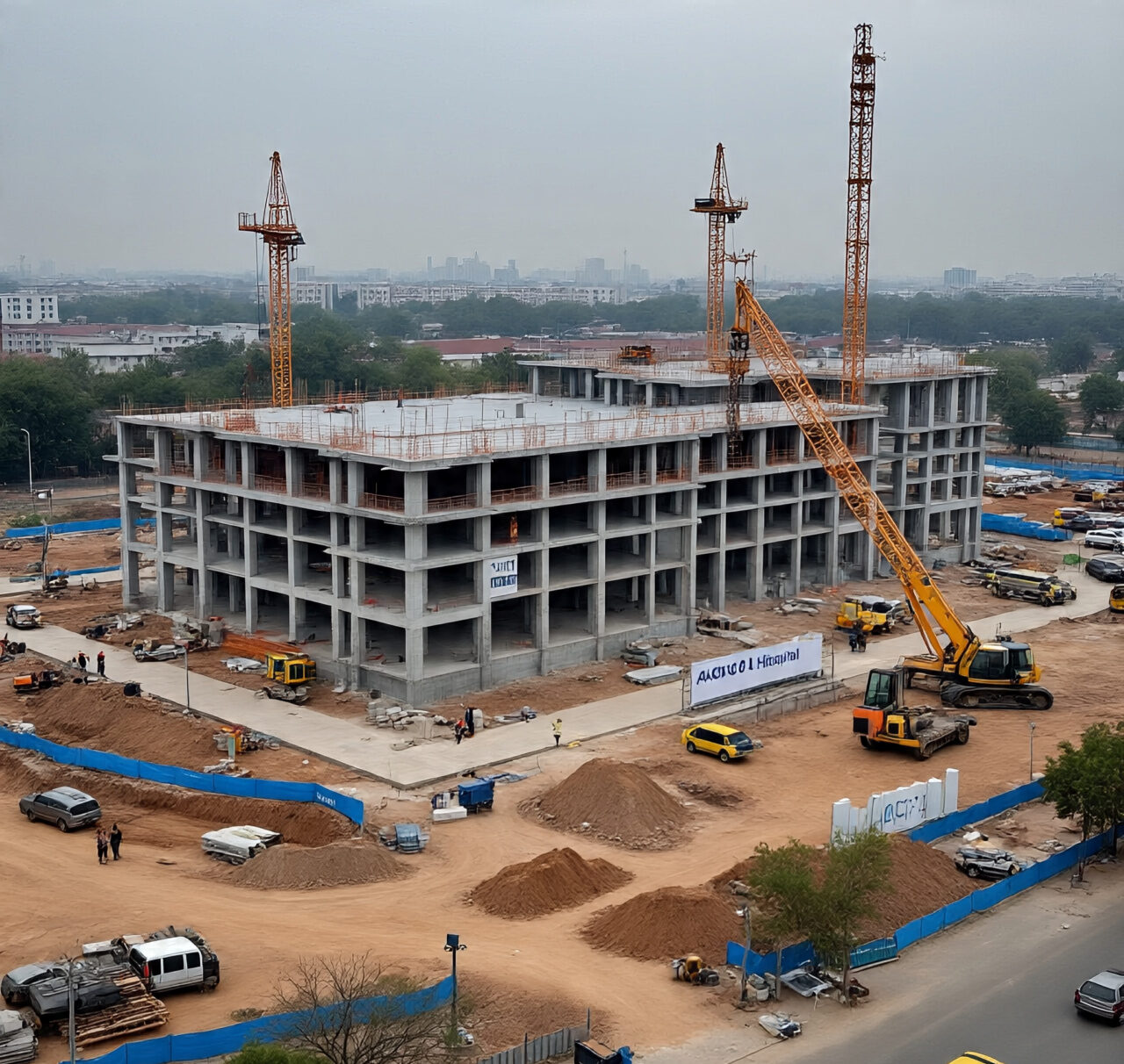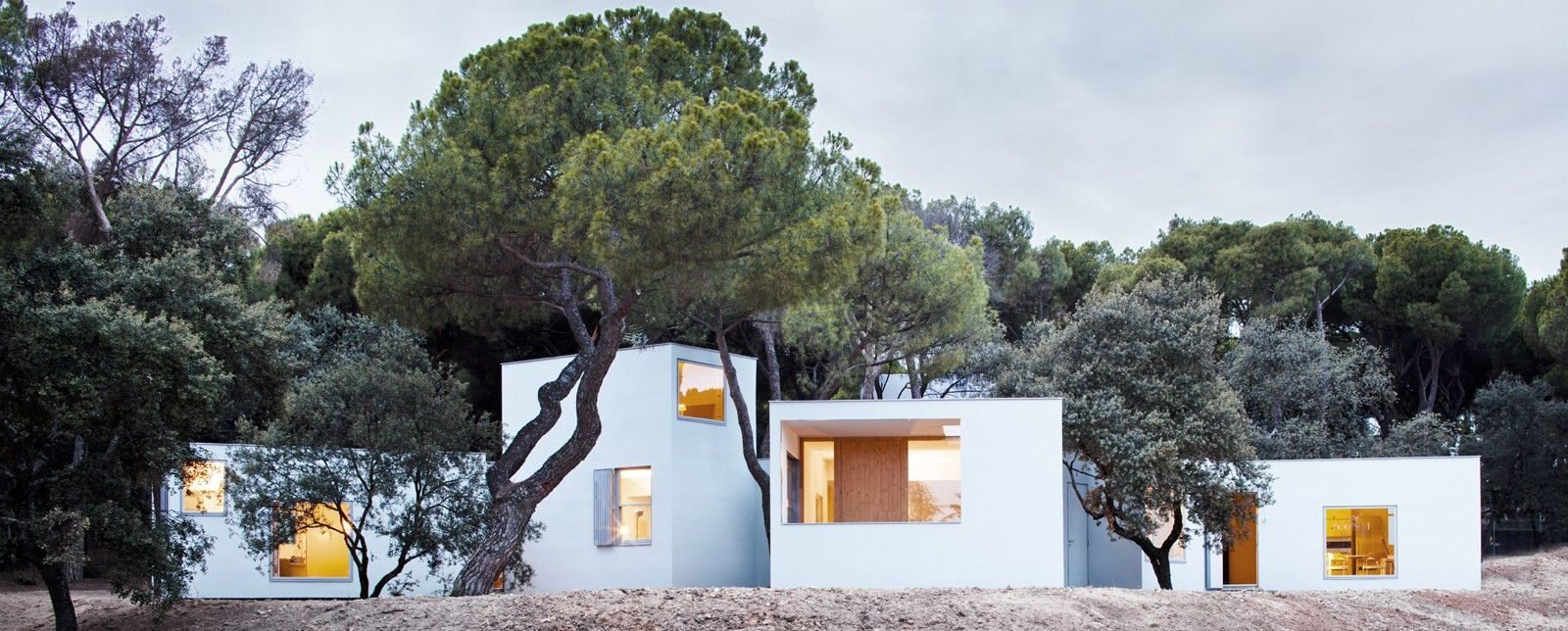
14 Sustainable Houses You Would Love to Live in
By now, everyone has probably heard of sustainability as a design trend. It seems that many people share a common belief that living in sustainable houses or dressing in sustainable clothes would be a setback from the comfortable and modern lifestyle they have gotten used to.
So, is this true? Well, we can learn from The Most Sustainable Office Buildings and watch how these sustainable houses created a friendlier environment. And one thing we know for sure is that if we keep up with our ways and ignore the warning calls of nature, we will lose all the comforts we have become accustomed to, and there will be no way back.
14 Astonishing Examples of Sustainable Houses
As for the previous question, you can answer it yourself after checking this collection of outstanding sustainable houses worldwide. Wouldn’t you like to live in any of these? Well, let’s see.
1. Slip House – Carl Turner Architects (London, United Kingdom)

©Tim Crocker
This is a 200-square-meter house in South London’s Brixton area. The house comprises three stacked boxes, slightly shifted from one another and all clad in translucent glass planks. It is provided with solar-assisted heat pumps for indoor thermal comfort, mechanical ventilation, photovoltaic cells, and a rainwater harvesting system.
Also Read: Why Will Sustainable Buildings Save Our World From Serious Danger?
- ©Tim Crocker
- ©Tim Crocker
- ©Tim Crocker
2. Syshaus Residence – Studio Arthur Casas (São Paulo, Brazil)

©EVE
This house in Larvik, Norway, has a total area of 220 sqm. It features a distinctive tilt towards the southeast, with solar panels covering its sloped roof. It has underground energy wells to complement the house’s needs for energy and more. The house’s geometry, orientation, and glass panels’ placement are adjusted to achieve passive heating and cooling. Also, its interior finishes are carefully selected for enhanced indoor climate and air quality.
- ©Paal-André Schwital
- ©Paal-André Schwital
- ©Paal-André Schwital
- ©Paal-André Schwital
4. Fall House – Fougeron Architecture (Big Sur, United States)

©Joe Fletcher
The three-bedroom house on California’s southern coast stretch of Big Sur is embedded in the sloping land towards the water’s surface. Its high-performance glass skin provides maximized views of the ocean and surrounding nature and daylight access to all rooms while reducing solar heat gain. Radiant hydronic heating is used to maintain thermal comfort for the entire house, whose layout also promotes stack ventilation, another energy-efficient method to improve the indoor climate for sustainable houses.
5. Living Screen House – CplusC Architectural Workshop (North Bondi, Australia)
The magnificent North Bondi single-family home is perfect for social gatherings and quiet family time. The form is heavily influenced by the site’s constraints, which were relatively narrow and presented some problems with over-looking. Due to the location’s unique characteristics, careful scheduling and preparation were essential to the project’s success.
- ©Murray Fredericks
- ©Murray Fredericks
- ©Murray Fredericks
6. Haus W – Kraus Schoenberg (Hamburg, Germany)

©Loana Marinescu
Another house is in the sloping grass-covered ground in Hamburg, Germany. Haus W is a 2-story prefabricated and low-energy house. It has an all-around glazed ground floor viewing the sloping garden and a first floor clad in sustainable white painted timber. The CNC-cut timber provides indoor thermal comfort through insulation and is also recyclable.
- ©Loana Marinescu
- ©Loana Marinescu
- ©Loana Marinescu
- ©Loana Marinescu
7. Marmalade Lane Cohousing Development – Mole Architects (Cambridge, United Kingdom)
There are 42 dwelling units in the Marmalade Lane development, including terraced houses with two to five bedrooms and flats with one and two bedrooms. The communal areas and shared amenities at Marmalade Lane are crucial to its mission of encouraging social cohesion and eco-friendly lifestyles.
The community’s extensive shared gardens serve as its focal point, with designated areas for gardening, activities, interacting, and quiet meditation, and the communal facilities include a multipurpose common house with a playroom, guest bedrooms, laundry services, gathering spaces, and a large hall and kitchen for eating together and gatherings.
8. MO House – FRPO (Madrid, Spain)

©Miguel de Guzmán
The single-family house is located in a forest on the outskirts of Madrid, Spain. The disaggregated design of the house was derived from the desire to integrate it with the forest, placing box-like masses in the gaps between the trees. The house is constructed from light cross-laminated wood panels, eliminating the need for a deep foundation and providing thermal insulation.
- ©Miguel de Guzmán
- ©Miguel de Guzmán
- ©Miguel de Guzmán
- ©Miguel de Guzmán
9. Edgeland House – Bercy Chen Studio (Austin, United States)

©Paul Bardagjy
Edgeland House is located on a reclaimed brownfield site in Austin, Texas. The vernacular pit houses of Native Americans inspired its design. The house comprises two green-roofed wings which shade each other from the sun. A linear courtyard extends between both wings, permitting airflow. The house is designed to leave minimal impact on the site. Its sloped green roofs are meant to heal and restore wildlife to the deserted, scarred land.
- ©Paul Bardagjy
- ©Paul Bardagjy
- ©Paul Bardagjy
- ©Paul Bardagjy
10. Casa Nirau – Paul Cremoux Studio (Mexico City, Mexico)

©Paul Cremoux Wanderstok
Casa Nirau is an upgraded 2-story family house in Mexico City. Its area was reduced from 2,754 sqft to 1,937 sqft to minimize its footprint, so its indoor spaces were redistributed. The energy-efficient home consumes a monthly $15 value of electricity and natural gas. It also employs a rainwater harvesting system that utilizes carbon-activated filters to convert the water collected by the roof and terrace into drinkable water.
- ©Paul Cremoux Wanderstok
- ©Paul Cremoux Wanderstok
- ©Paul Cremoux Wanderstok
11. Caruth Boulevard Residence – Tom Reisenbichler (Texas, United States)

©Bret Janak
The Gold LEED-certified residence is located in Dallas, Texas. Its elegant design merges luxurious and sustainable housing. The house is built to fit in between the existing trees on the site. It features sleek horizontal planes and lines throughout the façade to highlight the surrounding trees. The house is also provided with photovoltaic cells and drought-resistant landscape plants, in addition to incorporating recycled materials in its finishes.
- ©Bret Janak
- ©Bret Janak
- ©Bret Janak
- ©Bret Janak
12. House by the Pond – Stelle Lomont Rouhani Architects (Water Mill, United States)

©Matthew Carbone
The L-shaped 2-story house in Water Mills, New York, takes the form of a perfect rectangle by adding the backyard deck and vast pool to its layout. With a lake to its south, the design of the house guarantees maximized views of both adjacent water surfaces by widely using energy-efficient glass panels. These, in addition to the clerestory windows, provide sufficient natural light, and sunshades are used to minimize the solar heat gain in summer and preserve it in winter.
13. Đại Kim house – Aline Architect (Hanoi, Vietnam)
14. OUTrial House – KWK PROMES (Książenice, Poland)

©Julisz Sokolowski
OUTrial House is located on a 1,440-square-meter site in Książenice, Poland. The house itself has a total area of 180s sqm. It is carved into the grass-covered site, such that part of the ground is raised to act as a green roof for the house, providing it with natural insulation all year round. The floor-to-ceiling glass panels used extensively on the ground floor, let in the natural light and allow pleasant views of the surrounding greenery.
Sustainable Homes: In a Nutshell
Sustainable Homes are essential for minimizing our collective environmental impact and protecting the planet for the next generation. Lowering people’s exposure to toxic substances and enhancing air purity in the home encourages a healthier way of life.
Many professionals advocate for a cluster of environmentally sustainable homes where people can meet and exchange information and resources. It’s possible that community energy initiatives will help local communities cut costs and lessen their environmental impact.
Politicians are currently advocating for the right of municipal energy projects to generate their electricity. In the meantime, some communities are presently developing wind and hydroelectric generators to provide sufficient clean energy to power entire villages.













